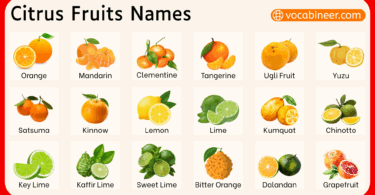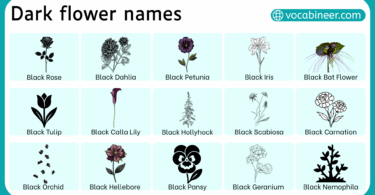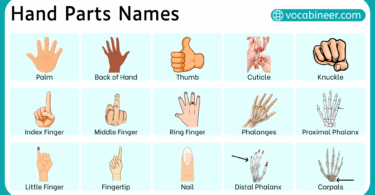Insects are small creatures that play an important role in the environment. They live in nearly every part of the world—on land, in water, and even underground. All insects have six legs, and most have wings at some stage of life. Learning insects names in English helps students, nature lovers, and ESL learners build useful vocabulary for science, reading, and outdoor activities. This article includes over 100 insect names with categories and pictures to support easy recognition and learning.
In This Page
List of Common Insects Names in English
These are insects most people recognize from daily life. They are found in homes, schools, gardens, and parks. Some may be helpful, while others are just visitors:
- Ant

- Bee
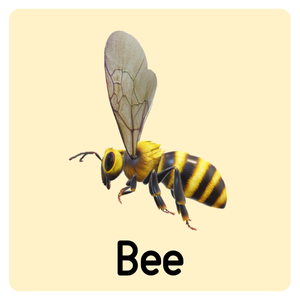
- Butterfly
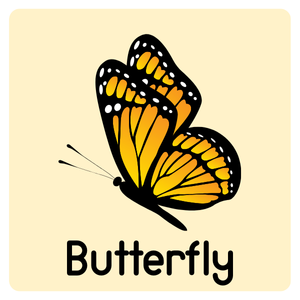
- Beetle
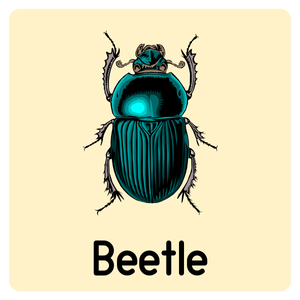
- Mosquito
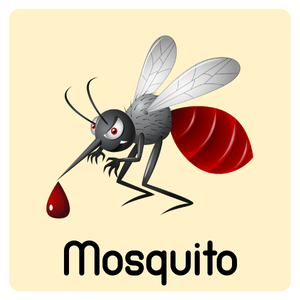
- Fly
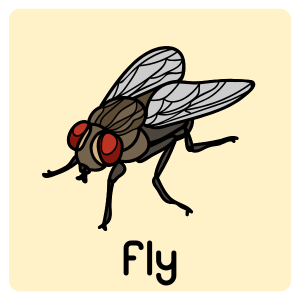
- Dragonfly
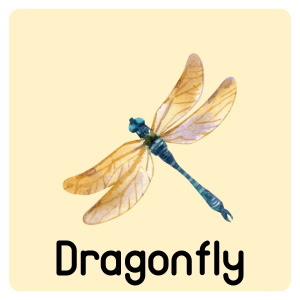
- Grasshopper
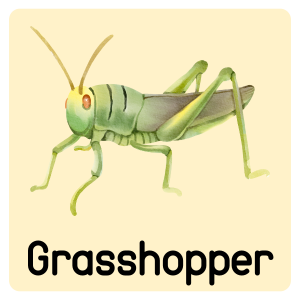
- Ladybug
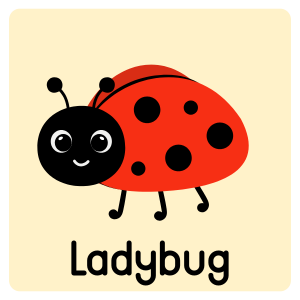
- Wasp
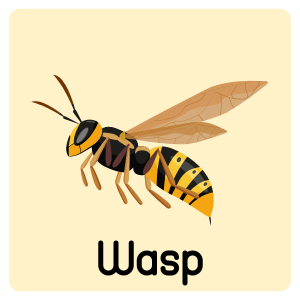
- Termite
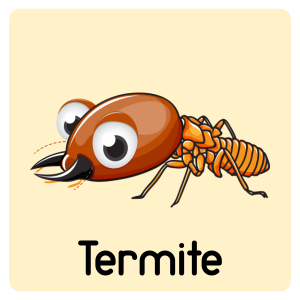
- Cockroach
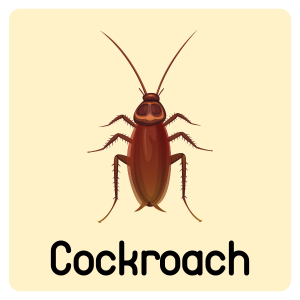
- Moth
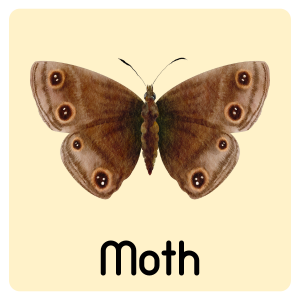
- Cricket
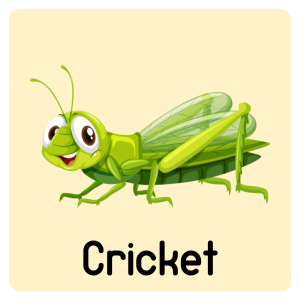
- Firefly
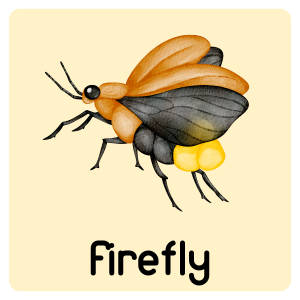
- Aphid

- Flea
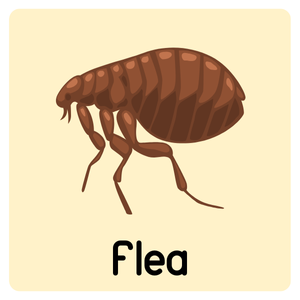
- Tick
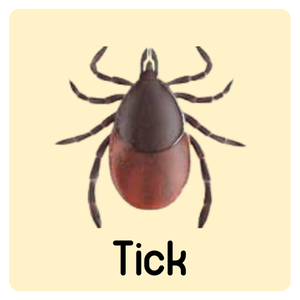
- Lice
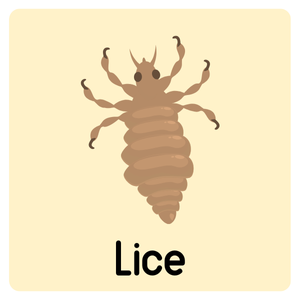
- Caterpillar
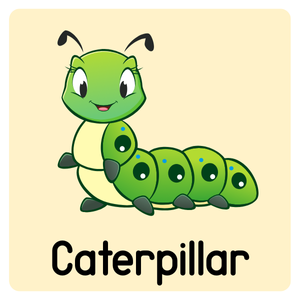
Flying Insects Names with Pictures
Flying insects have wings and can move easily through the air. Some fly during the day while others are active at night:
- Butterfly – colorful wings, feeds on nectar
- Bee – pollinates flowers and plants
- Mosquito – carries disease and sucks blood
- Housefly – common in homes and garbage
- Wasp – builds nests and can sting multiple times
- Dragonfly – hovers and hunts small insects
- Hoverfly – looks like a bee but does not sting
- Firefly – glows at night with a flashing light
- Moth – night-flying, often dull colored
- Gnat – small and swarming in groups
- Horsefly – large biting fly
- Lacewing – delicate wings and useful in gardens
- Crane Fly – looks like a large mosquito, but harmless
Crawling and Ground Insects Names
These insects live close to the soil or inside wooden structures. They do not fly often and use their legs for crawling:
- Ant – follows scent trails and builds tunnels
- Cockroach – runs fast and hides in dark places
- Termite – lives in colonies and eats wood
- Beetle – strong jaws and shell-like wings
- Earwig – pincers on the back, hides under stones
- Silverfish – shiny, fast-moving, and loves paper
- Woodlouse – crustacean that curls into a ball (often mistaken for insect)
- Weevil – pest in grains with a long snout
- Caterpillar – soft-bodied stage of butterflies and moths
Names of Nocturnal and Nighttime Insects
These insects are active when the sun goes down. They are drawn to light and make nighttime sounds:
- Moth – found near lamps and windows
- Firefly – glows in the dark to attract mates
- Cricket – makes noise by rubbing wings together
- Katydid – green, leaf-like insect that chirps at night
- Mosquito – bites during dusk and dawn
- Cockroach – searches for food at night
- Earwig – prefers cool, dark spots during the evening
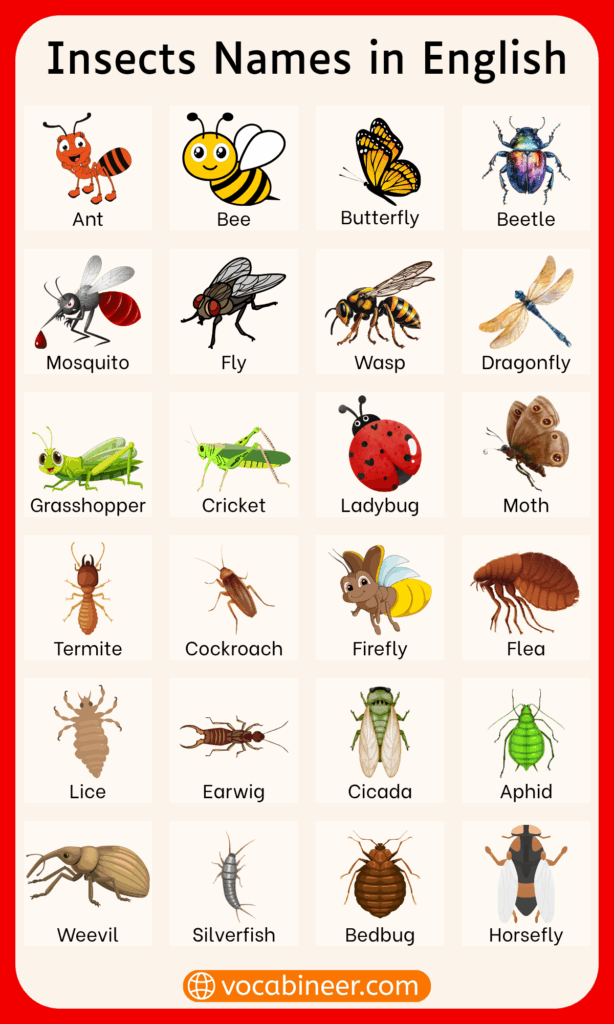
Water Insects Names and Types
These insects are found in ponds, streams, and other wet areas. Some swim, while others float or dive:
- Water Strider – walks on top of water
- Diving Beetle – swims underwater using legs
- Mosquito Larva – lives in still water before becoming adult
- Backswimmer – swims on its back
- Water Boatman – paddles through water with legs
- Whirligig Beetle – spins in circles on water surface
- Mayfly – short-lived adult, common near rivers
- Caddisfly – builds case houses underwater
- Damselfly – thin and delicate, related to dragonflies
Biting and Stinging Insects List
These insects defend themselves or feed by biting or stinging. Some are harmful to humans and pets:
- Mosquito
- Wasp
- Bee
- Hornet
- Ant (Fire Ant)
- Horsefly
- Deer Fly
- Flea
- Tick
- Bedbug
- Lice
- Black Fly
- Yellow Jacket
- Sweat Bee
- Kissing Bug
- Botfly
- Chigger (larval mite)
- Sandfly
- Biting Midge
- Assassin Bug
Colorful and Patterned Insects Names
These insects have bright colors or patterns that make them easy to identify. Some are for warning, while others are for beauty:
- Butterfly – comes in many colors and designs
- Ladybug – red with black spots
- Jewel Beetle – metallic and shiny
- Peacock Butterfly – eye-like spots on wings
- Painted Grasshopper – mix of green, red, or yellow
- Red Milkweed Beetle – found on milkweed plants
- Orchid Mantis – looks like a flower to trick prey
Harmful and Pest Insects with Images
These insects cause damage to crops, wood, clothes, or stored foods. Farmers and homeowners try to control them:
- Aphid – sucks sap from plant stems
- Locust – eats crops in large numbers
- Weevil – damages stored grains and seeds
- Termite – breaks down wood and furniture
- Mealybug – white insect found on stems and leaves
- Thrip – tiny and hard to see, affects vegetables
- Leaf Miner – makes trails inside leaves
- Bollworm – harms cotton and other crops
- Cabbage Worm – eats cabbage and broccoli
- Colorado Potato Beetle – destroys potato plants
Beneficial Insects for Garden and Nature
These insects help by eating pests or pollinating flowers. They are useful in farms and backyard gardens:
- Honeybee – makes honey and pollinates crops
- Ladybug – eats aphids and small pests
- Dragonfly – controls mosquitoes and flies
- Lacewing – eats garden pests in larval stage
- Praying Mantis – catches flies, grasshoppers, and moths
- Hoverfly – pollinates and lays eggs near pests
- Ground Beetle – hunts pests at night
- Dung Beetle – cleans waste and recycles nutrients
Rare and Exotic Insects Names
These insects are known for their rare looks or live in special regions. Some are large, camouflaged, or endangered:
- Hercules Beetle – one of the largest beetles
- Goliath Beetle – strong and heavy, lives in Africa
- Orchid Mantis – looks like a flower
- Lanternfly – spotted wings and odd shape
- Stag Beetle – large jaws like deer antlers
- Walking Stick – long and thin like a twig
- Giant Water Bug – large predator in ponds
- Titan Beetle – among the biggest insects
- Atlas Moth – huge moth with wide wings
- Leaf Insect – looks exactly like a green leaf
A to Z Insects Names in English with Pictures
A helpful alphabetical list to learn or review insect names:
- Ant
- Aphid
- Bee
- Beetle
- Bedbug
- Butterfly
- Caddisfly
- Caterpillar
- Cockroach
- Cricket
- Damselfly
- Dragonfly
- Earwig
- Firefly
- Flea
- Fly
- Gnat
- Grasshopper
- Hornet
- Horsefly
- Hoverfly
- Katydid
- Lacewing
- Ladybug
- Lanternfly
- Leafhopper
- Locust
- Mayfly
- Mealybug
- Millipede (not insect)
- Mosquito
- Moth
- Praying Mantis
- Red Milkweed Beetle
- Silverfish
- Stag Beetle
- Termite
- Thrip
- Tsetse Fly
- Walking Stick
- Water Boatman
- Water Strider
- Weevil
- Whirligig Beetle
- Woodlouse (not insect)
FAQs about Insects Names in English
Common insect names include ant, bee, butterfly, mosquito, grasshopper, ladybug, dragonfly, and housefly. These insects are often seen in gardens, homes, and outdoor spaces, making them useful to learn in English.
There are thousands of insect names in English. New species are named each year by scientists. Students usually begin with the most common insects such as flies, beetles, moths, and ants.
Teachers often use insects like bee, butterfly, mosquito, and ant as examples. These are easy to recognize, and their names are simple for students to remember in English lessons.
Insect names in English are mostly the same worldwide. However, some regions have extra local names or variations. The scientific names remain the same across all languages for clear identification.
Learning insect names in English helps in school, travel, and nature studies. It allows you to talk clearly about insects in science classes, outdoor activities, and everyday conversations.
Read More


